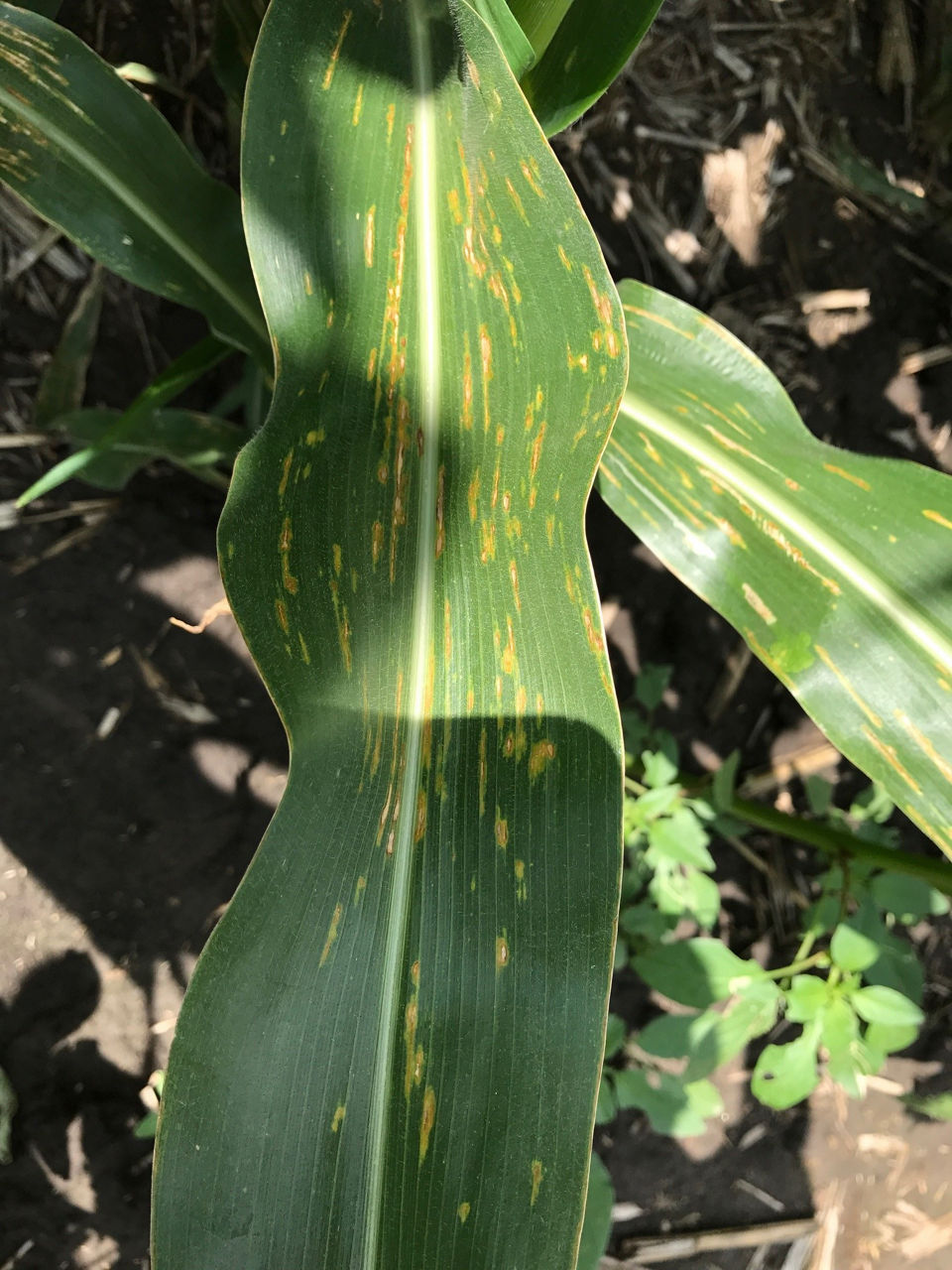Identification and Management of Bacterial Leaf Streak
December 28, 2023
Bacterial leaf streak (BLS) is found in irrigated and dryland corn fields in the High Plains and Midwest. BLS was first confirmed in Nebraska in 2016, with symptomology first reported in 2014. The bacterium that causes BLS, Xanthomonas vasicola, enters the plant through the stomata or injured tissue. It has been found in field corn, popcorn, and sweet corn. Since it is a bacterial disease, fungicide treatments are not effective in controlling the disease. Cultural practices such as crop rotation and equipment sanitation are the best mitigation practices.1,2
Identification
The lesions of BLS are wavy, irregular, and have a yellow hue that turns necrotic as the disease progresses. Due to the similarity in symptomology, grey leaf spot (GLS) can be difficult to distinguish from BLS (Figure 1). The key identifying factor of BLS are the wavy lesion margins and yellow hue behind the lesion (Figure 2). GLS has more squared lesion margins and does not have a yellow hue around the lesion. BLS can also be hard to distinguish from common rust, but common rust has raised pustules on the lesions and is more orange in color.1,2


Management
Like any disease, a host, conducive environmental conditions, and the pathogen inoculum must be present for an infection to take place. High humidity and long leaf wetness durations are conducive environmental conditions for BLS. The disease can be found on corn at any growth stage. Overhead irrigation and rain events can accelerate the progression of BLS. The bacterium that causes BLS can be found on many weed species such as green foxtail, bristly foxtail, Johnsongrass, and shattercane. It has also been reported to have been found on volunteer corn in soybean. Therefore, weed management can also influence the amount of inoculum in each field. There have not been any reported yield or quality losses due to BLS. However, it can be a stressor that leads to other agronomic issues.1,2
Cultural practices, such as cleaning equipment before moving to other fields and crop rotation, have been the most useful in controlling BLS.
Trenton Houston
Channel Agronomist
Sources:
1Sivits, S., Hartman, T., Jackson-Ziems, T. 2017. Bacterial leaf streak of corn. CROPWATCH. University of Nebraska-Lincoln. https://cropwatch.unl.edu/2017/bacterial-leaf-streak-corn
2Sivits, S. and Jackson-Ziems, T. 2019. Bacterial leaf streak of corn in Nebraska. CROPWATCH. University of Nebraska-Lincoln. https://cropwatch.unl.edu/2019/bacterial-leaf-streak-corn-nebraska
1110_336901